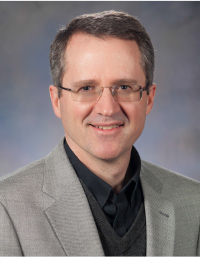 Dr. Tim Davis, professor in the Department of Computer Science and Engineering at Texas A&M University, has been named a Fellow of the Institute of Electrical and Electronics Engineers (IEEE) for his contributions to sparse matrix algorithms and software.
Dr. Tim Davis, professor in the Department of Computer Science and Engineering at Texas A&M University, has been named a Fellow of the Institute of Electrical and Electronics Engineers (IEEE) for his contributions to sparse matrix algorithms and software.
IEEE Fellow is the highest grade of membership and is recognized by the technical community as a prestigious honor and an important career achievement. The grade of Fellow is conferred by the IEEE Board of Directors upon a person with an outstanding record of accomplishments in any of the IEEE fields of interest. The total number selected in any one year cannot exceed one-tenth of one percent of the total voting membership.
Davis is also a Fellow of the Society for Industrial and Applied Mathematics (SIAM) and the Association for Computing Machinery (ACM), making him one of the few individuals to hold all three distinctions.
“Becoming an IEEE Fellow is an honor that brings back fond memories of my undergraduate days at Purdue when I first became a member of IEEE,” said Davis. “As an undergraduate student I relied on the SPICE circuit simulator for my circuit design projects, but the cycle has come full circle since there are now many commercial and government lab circuit simulators that rely on my sparse matrix solvers.
“I’m please to bring this honor to Texas A&M, which is a wonderful environment for my research.”
Davis is recognized as a world leader in algorithmic research for sparse matrix computations. His work combines graph-theoretic methods and numerical techniques to create algorithms for solving problems in computational science that arise across a wide range of applications. He incorporates his novel theory and algorithms into robust library-quality open-source software that is widely used in industry, academia and government labs.
Davis’ graph and sparse matrix algorithms are important to scientific and engineering simulations, social network analysis, computer vision, computer graphics, robotics and many other domains. The MathWorks relies on his sparse solvers in MATLABTM, a widely-used language and application for technical computing. Every photo in Google StreetView, Photo Tours, and 3-D Earth is placed in proper position using his software via Google’s Ceres non-linear least squares solver.
The US Geological Survey (USGS) uses his sparse solvers to process images of the Earth, moon, Mercury and other planetary bodies, cutting its time-to-solution from hours/days down to minutes. Davis’ open-source software has been adopted by all major Linux distributions and is widely used in open-source packages such as Sandia’s Xyce circuit simulator, GIMP, R, Octave, FEniCS, ROS, OpenSLAM.org, Boost, Julia and Scilab, to name just a few.
Davis joined the faculty at Texas A&M in 2014 after 23 years at the University of Florida. He holds doctoral and master’s degrees in electrical engineering from the University of Illinois, Urbana-Champaign, and graduated with distinction with a bachelor’s degree in electrical engineering from Purdue University.